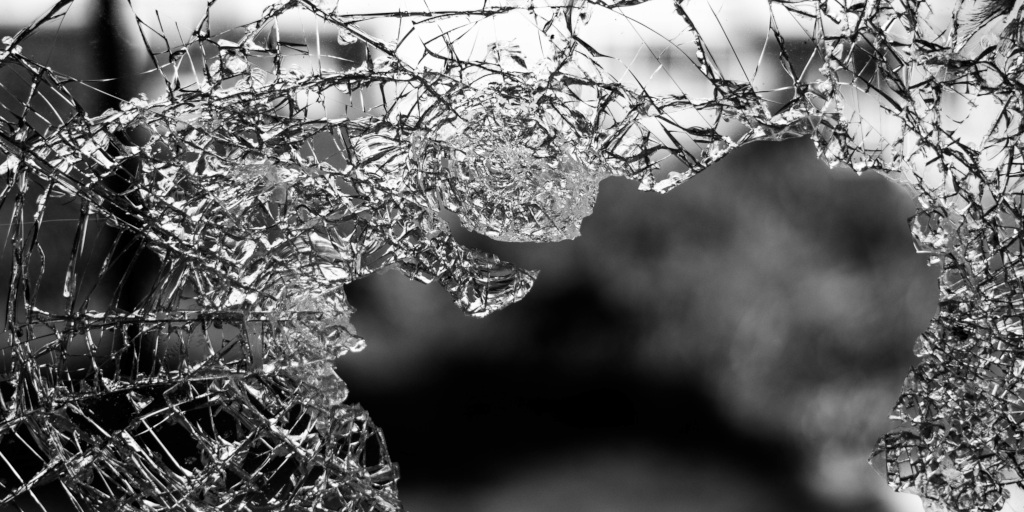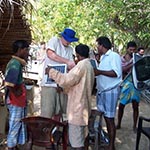When I arrived in Sri Lanka in 2005 I saw why Marco Polo had called it the most beautiful island in the world; I immediately fell in love. It took about six months to understand the paradox of the country’s history of violence at a superficial level. I keep returning, and each time I’m required to relearn the context. The terrorist attacks on Easter Sunday appear different from prior episodes of violence. The suicide bombings killed 321 people (at last count, and the number is still growing), many of whom were tourists.
There are great parallels to be made between 2005 and 2019. In 2005 the country was rebuilding from the 2004 Indian Ocean tsunami amidst a fragile ceasefire. In 2019 Sri Lanka is responding to a manmade disaster that showcases failure in achieving reconciliation—peace remains fragile—following decades of violent conflict.
One account of the history of the ethnic conflict is that Sri Lanka was always a divided island, but the act of the United Nations to ratify all existing borders washed the historic divisions away. Another account insists that the conflict was a direct result of centuries of colonial rule. The truth is that each of the explanations offer important information about the decades of violent conflict between the Liberation Tigers of Tamil Eelam (LTTE) and the Government of Sri Lanka (GOSL). Another truth is that there is no consensus about the conflict in Sri Lanka.
The LTTE were so great (for lack of another word) in their campaigns of violence that some outlets in Sri Lanka reported their responsibility for the September 11 attacks. But how do you write in past tense about an organization you experienced during a negotiated peace—arguably prolonged by the tsunami—which returns to war and is ultimately annihilated? The LTTE, a terrorist organization, were in charge of significant portions of the conflict sensitive reconstruction projects I was a part of, because nothing happened in the areas they controlled without their permission. When the highway from Vavunya to Jaffna opened, there were GOSL and LTTE checkpoints at both ends. It was not open for long back then; December 2005 was the bloody month that made it clear there was no peace agreement.
My understanding of events came from the same journalism that claimed the LTTE’s responsibility for September 11. Was the barber in Jaffna actually killed by accident? Were the Christmas Day hartals (a kind of strike or curfew that causes everything to shut down) really the result of the Tamil National Alliance member of parliament being assassinated in front of his family while attending mass on Christmas Eve? For the record, Joseph Pararajasingham was assassinated at mass, but I was never able to identify the real story in Jaffna (if there was one).
Through that period, however, there was a truth all the aid workers I knew were aware of: no foreigner had ever been killed or targeted by the LTTE.
Fast forward to Easter Sunday 2019. I am watching updates come out of Sri Lanka. It is grim and uncertain, as I remember. Vinya Ariyaratne lets people know about services available through Sarvodaya (Sri Lanka’s largest NGO, founded by his father A.T. Ariyaratne in 1958). He cautions “Don’t share images of victims,” and “Verify first” before sharing.
The moment I learn of the hotels that have been targeted I know there is a new problem, but I know so much of the context is the same. Research on peace and conflict can provide important information for monitoring and evaluating events in Sri Lanka, but it fails to make helpful predictions. Why the asymmetry?
There are key gaps between the research and its application. The first is economic, in the case of the Easter Sunday attacks, officials were afraid to cause a panic. But it is not just the economics of tourism. Sri Lanka and Haiti have battled for the unfortunate title of poorest country in the Northern hemisphere more years than not in recent decades. While their economies have become somewhat bloated by post-disaster inflation, their infrastructure and systems have not. There is well developed research on responding to crisis and disaster. It points to “R’s” which explain the likelihood of experiencing resistance, resilience, or vulnerability. My preferred, simple, theory looks at Resources, Response, Redundancy, and Robustness. Essentially the theory tells us what we see: what you have, your back-up plans, and how quickly you use them, are great for making predictions about responses to disasters.
Sri Lanka does not have much material wealth (measured in GDP), plan B’s are rare, and response is delayed, hence Sri Lanka is vulnerable. Most of Sri Lanka’s strength comes from the grassroots and community levels, where the GOSL fails the people innovate and find ways to survive. This grassroots strength is good for recovery, but it is no true defense.
The second gap is much more interesting from an academic standpoint, and it is harder to label. There is an information gap in understanding Easter Sunday. It is a new face of terror, it is extremist violence, and it has either been imported from abroad or created as a mutation from global events. Please do not get me wrong, asking “Could this have been prevented?” is important, but we have really good explanations for the failure to prevent this episode of terrorism. What I am alleging here is that the much more important questions relate to relationships between global events and the violence in Sri Lanka.
Much like Bangladesh suffers from torrential rains and flooding as a result of global warming, which they have an extremely limited role in causing; Sri Lanka’s recent experience of violence appears to have been catalyzed by events like the mosque shootings in Christchurch, and inspired by ISIS (depending on whether you trust their claims; the GOSL sees their hand in it). This suggests that it can be fairly claimed that the global community has some responsibility for both causing and responding to the recent terrorism. But just as New Zealand has little course for action in addressing President Donald Trump’s reckless statements which have been used as inspiration for alt-right and white supremacist violence and terrorism, Sri Lanka can do little to guard against Sri Lankan militants who travel to Turkey and Syria and are trained by the Islamic State.
The first gap explains why the warnings provided by moderate Muslims were essentially ignored. Eleven dossiers on local Islamist extremists, including Zaharan Hashim, “leader of the ISIS team in Sri Lanka,” were provided by early 2017, yet they were unsuccessful in their efforts in catalyzing a police response. The lack of response and mobilization of resources is clearly to blame. But the second gap is more crucial, because Sri Lanka will never be able to police the world for the terrorists that return home, or the events that inspire reactions. In fairness to Sri Lanka, experts who track the Islamic State’s social media admit there were few—if any—credible indications that Sri Lanka would be targeted.
The National Thowheeth Jama’ath’s (NJT) acts of terrorism are a clear departure from Sri Lanka’s history of violence. They appear to have been motivated by the recent March 2019 attack on Muslims at mosques in Christchurch, New Zealand. It presents an alarming trajectory for reactionary extremism and places the whole globe in proximity for retaliatory violence and revenge. The levels of complexity are hard to decipher; many of those killed in Christchurch were refugees who had been forced to flee violence in their home countries, and many were innocent children. We’re seeing violence beget violence in ways that require new solutions. I hope scholars rise to this challenge.



